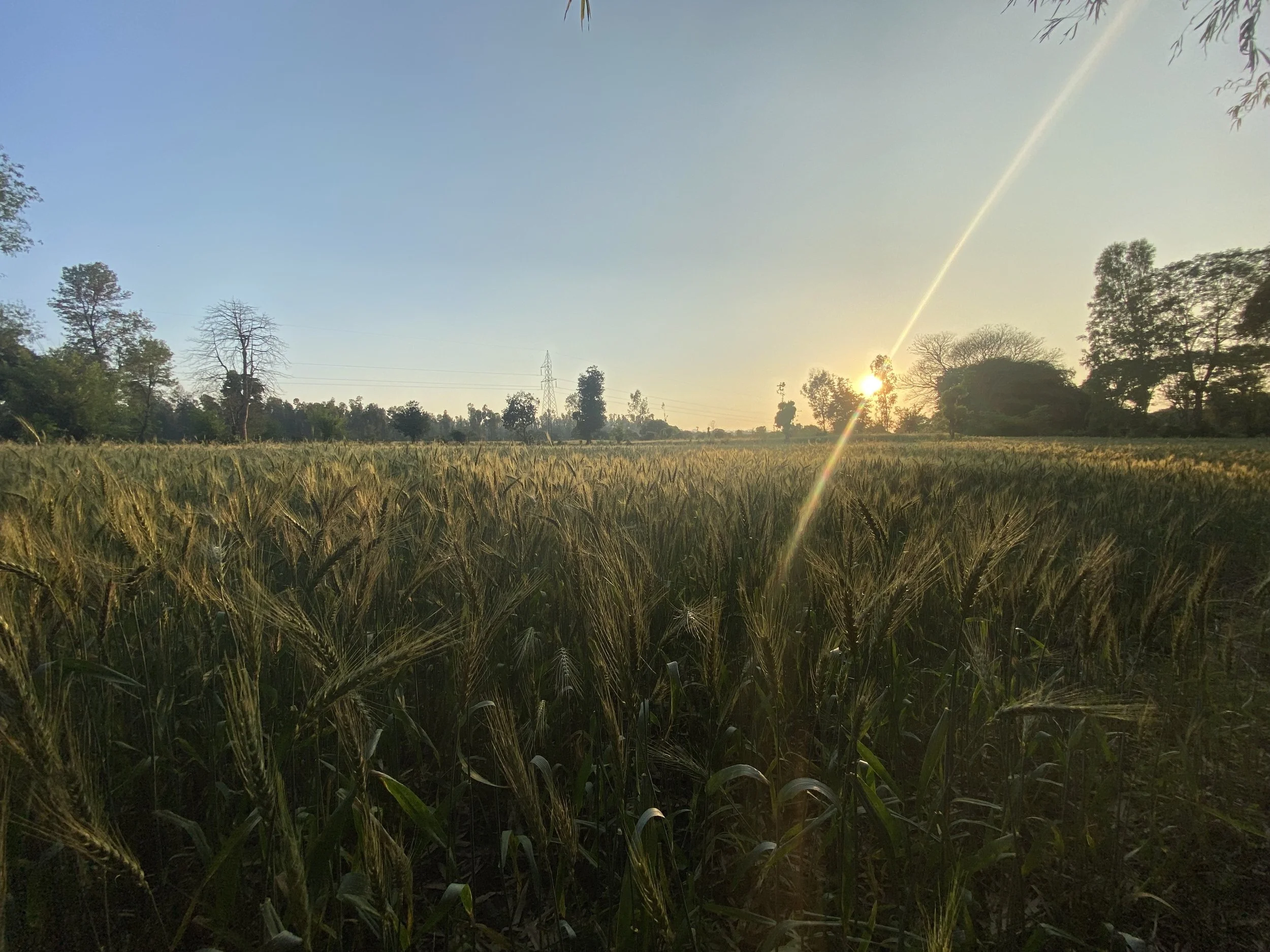The Art of Farming
I mentioned before that everything grown at Navdanya is done so with mixed cropping – multiple crops grown together in the same field to support one another and provide more diversity of nutrients taken from and given back to the soil.
There is no place you’ll find one field of anything. The wheat is growing with oats, barley with radish and peas, the natural grasses, clovers, and other wild weeds growing alongside them. Space is intentionally dedicated to pollinator-friendly and pest-repellant plants and flowers as well as multiple varieties of each crop growing at once, some plots planted in rows while others are growing quite wild across the fields.
It’s a beautiful combination of chaos and order. To an untrained eye, it might seem a bit out of sorts. But this is truly a work of art – a conscious weaving of biodiversity throughout an intentional space to create the most beautiful expression of harmony possible.
The farmers here have each been with the farm for anywhere from 17-20 years. They know the land. They know this place. They’ve seen the changes that have happened over time. They know the subtle shifts and nuances present in this ever-evolving space. And they respond with purpose and intention to evolve along with it.
Farming is both a skill and a trade, but it’s also a personal practice and a co-creative art form – curated in relationship with the place and region you are. It requires honoring the ways of mother nature, honoring the biodiverse region, honoring the place in time you are in and ways in which the land being tended to is asking to be expressed. And it asks all of you to connect to all of where you are.
In today’s industrial agriculture system, farms are pushed to operate as “monocultures” – growing one variety of the exact same (usually genetically modified) crop across vast swaths of land, all in perfectly neat rows, the diversity desperately simplified for efficiency of harvest. It measures calories instead of nutrition or nourishment and output (i.e. “yields”) over impact, while neglecting to acknowledge what is happening on behalf of that intensive production.
Farming methods are reduced to little more than planting, spraying pesticides and herbicides, adding chemical fertilizers and other inputs, and repeating (increasing the use of chemicals each year as the soil degrades). Every insect species is seen as a pest and every plant that doesn’t hold commercial value is deemed not only useless, but something we must wage war on with toxic chemicals.
There is no room or allowance for artistic expression in industrial agriculture – on behalf of the farmer or the land being tended to.
Industrial agriculture rides on its claim as the answer to “feed the world”, pushing for more chemicals, more hybridized seeds, more technology and machinery – in so doing separating farmers from the land in which they tend to, all the while failing to recognize that these very practices are the reason that people are struggling in the first place.
We aren’t challenged in the effort to produce enough food for every human on this planet. 70-80% of food grown across the world comes from small farmers. Industrial agriculture produces commodities – used for biofuel, cattle feed and much going to waste – destroying the very planet we rely on to survive, producing nutritionally deficient and calorically dense products that shouldn’t even be categorized as food.
Moreover, people are hungry because they have been de-valued, their sovereignty and autonomy stolen, and the lushness of their lands destroyed. They don’t need a corporate savior; they need to be able to feed themselves.
Here at Navdanya, I see the care and precision involved in knowing the subtleties of which varieties of crops are which, when certain ones are ready for harvest and others aren’t, what different plants need that others don’t, and the meticulous nature of seed cultivation and sorting. I see how there is no space to NOT act on behalf of the benefit of the earth – because thinking that there is any other option is the exact place where things go wrong.
A seed is a living container of knowledge – holding all it needs to grow into the smallest grass or the tallest tree.
That knowledge gets shared with the people who are hands on with the soil of place, who know the land that they work with, who are harmonizing alongside the Earth, who are in integrity with how they are giving back in order to receive – the farmers.
Everything is so backwards in the way we pedestal modernized culture today, for the peasants and the farmers are the wisest of us all. They are the ones who always have – and still do – look to nature as the true teacher.
